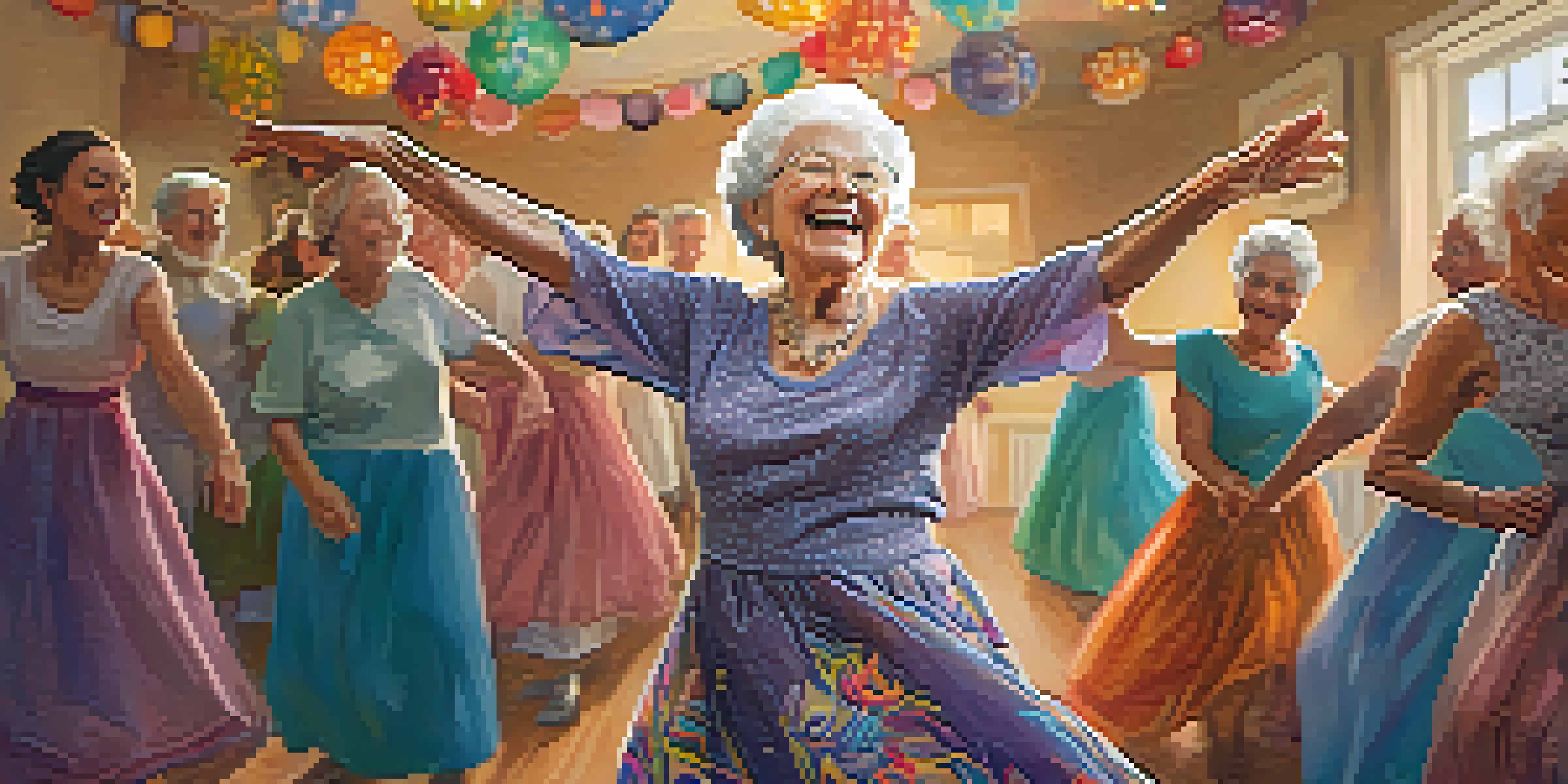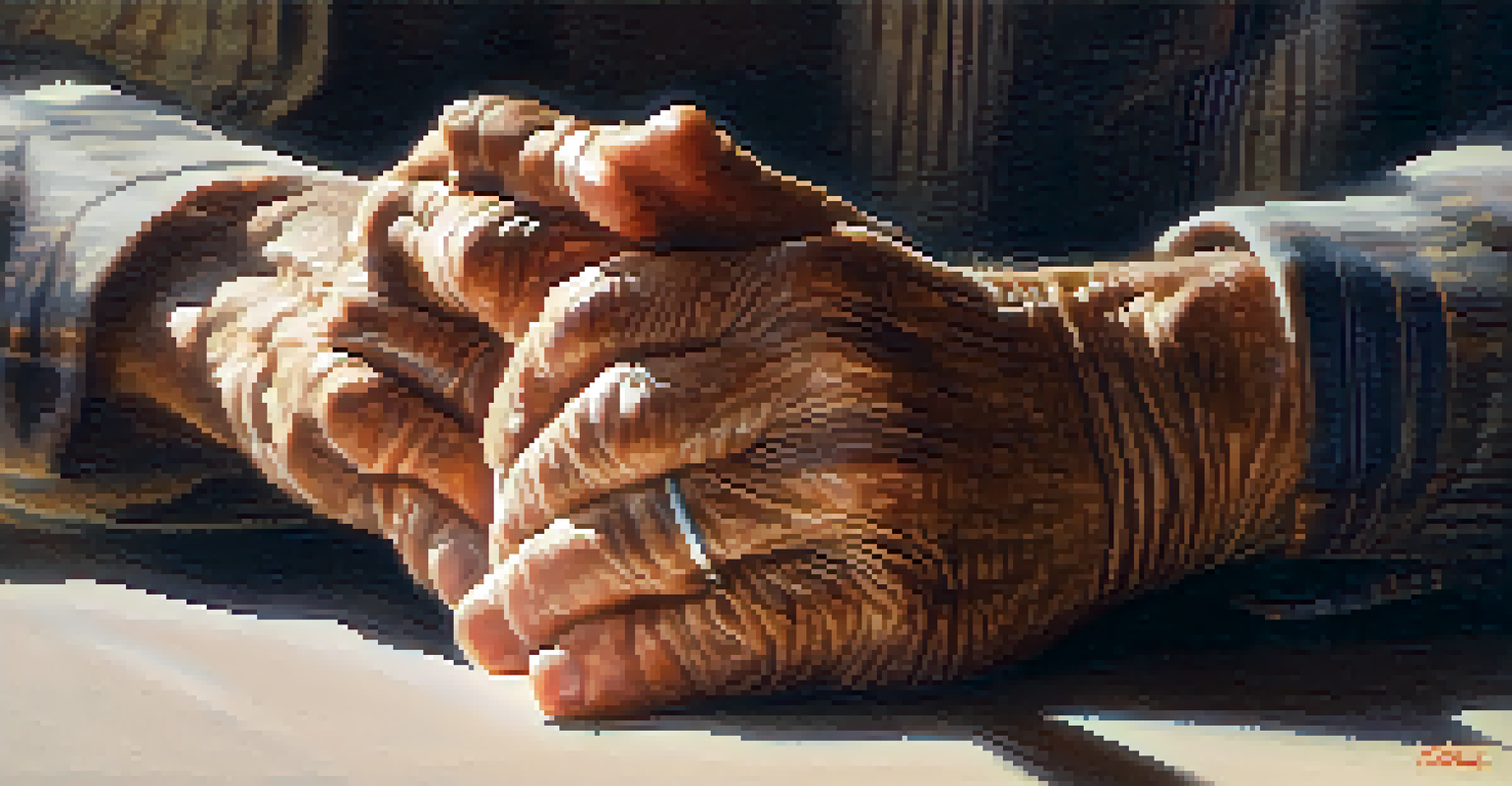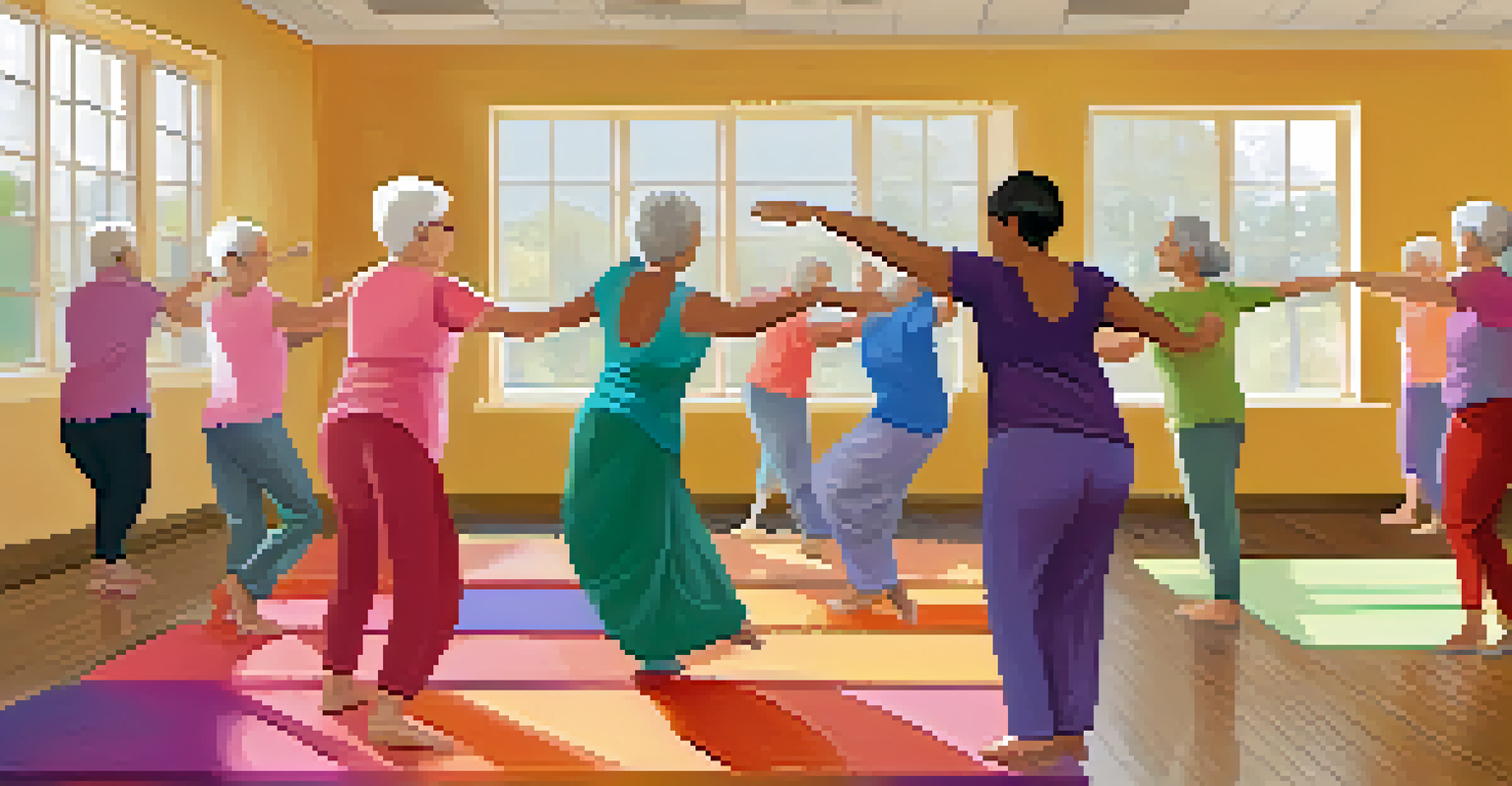Dance Therapy: Enhancing Emotional Well-being in Older Adults

Understanding Dance Therapy and Its Benefits
Dance therapy is a creative approach that uses movement to promote emotional, cognitive, and social integration. It allows individuals to express themselves through movement, which can be particularly beneficial for older adults facing emotional challenges. By engaging in dance, seniors can experience a sense of freedom and joy that might be hard to find in other forms of therapy.
Dance is the hidden language of the soul.
One of the key benefits of dance therapy is its ability to reduce feelings of anxiety and depression. The rhythmic movements and music can uplift spirits and create a positive environment. Moreover, it fosters a sense of community, as participants often engage in group sessions, forming connections that combat loneliness.
Additionally, dance therapy encourages physical activity, which is crucial for maintaining mobility and overall health in older adults. As they move to music, they not only improve their physical fitness but also enhance their emotional well-being, creating a holistic approach to health.
The Science Behind Movement and Emotion
Research has shown that movement can trigger the release of endorphins, the body's natural mood lifters. This biological response is one reason why dance therapy can be so effective in improving emotional well-being. For older adults, who may face various physical and mental health challenges, this natural boost can be a game changer.

Studies have highlighted that engaging in dance can help improve cognitive functions, such as memory and attention. These cognitive benefits are particularly important for seniors, as they may experience age-related decline. By combining physical movement with cognitive engagement, dance therapy can provide a dual benefit.
Dance Therapy Enhances Well-Being
Engaging in dance therapy promotes emotional, cognitive, and physical health, especially for older adults.
Moreover, dance therapy often incorporates improvisation and creativity, which can stimulate the brain and enhance emotional expression. This creative outlet allows seniors to explore their feelings in a non-verbal way, making it a powerful tool for those who may struggle to articulate their emotions.
Creating a Safe Space for Expression
A vital aspect of dance therapy is the safe and supportive environment it fosters. In group sessions, participants can express themselves without fear of judgment, which can be liberating. This nurturing atmosphere allows older adults to explore their emotions and experiences through movement, leading to greater self-acceptance.
Movement is a medicine for creating change in a person's physical, emotional, and mental states.
Therapists trained in dance therapy are skilled at creating a space where all participants feel included and valued. They often tailor sessions to accommodate varying abilities and preferences, ensuring that everyone can participate and benefit. This personalized approach helps build trust and encourages deeper emotional exploration.
Furthermore, as participants share their experiences and feelings through dance, they often find common ground with others. This shared experience can lead to new friendships and social connections, further enhancing emotional well-being. The communal aspect of dance therapy can be particularly significant for older adults, who may feel isolated.
Incorporating Dance Therapy into Daily Life
Integrating dance therapy into daily routines doesn't have to be complicated. Simple movements set to music can be done at home or in community centers, making it accessible for older adults. Even short sessions of dancing can uplift spirits and encourage physical activity, promoting overall well-being.
For those who may not feel comfortable in a group setting, individual dance therapy can also be beneficial. This one-on-one approach allows for personalized attention and can be tailored to the individual's needs and preferences. Whether it's a gentle sway to their favorite songs or more structured movements, the key is finding joy in the process.
Movement Boosts Mood and Connection
The rhythmic movements in dance therapy help release endorphins, fostering emotional expression and social bonds.
Additionally, caregivers can play a crucial role by joining in the fun. Encouraging loved ones to dance together can strengthen bonds and create joyful memories. It's a wonderful way to encourage emotional expression while also fostering a supportive environment.
Success Stories: Real-Life Examples of Transformation
Many older adults have shared inspiring stories about how dance therapy has changed their lives. For instance, one participant recounted how she overcame feelings of isolation and depression through group dance sessions. The joy of movement and connection with others helped her rediscover her passion for life.
Another example includes a gentleman who had difficulty expressing his emotions due to past trauma. Through dance therapy, he found a way to connect with his feelings and communicate them non-verbally. This transformation not only improved his emotional state but also positively impacted his relationships with family and friends.
These success stories highlight the profound impact that dance therapy can have on emotional well-being. As more older adults share their experiences, it becomes evident that movement can be a powerful catalyst for healing and connection.
Challenges and Considerations in Dance Therapy
While dance therapy offers numerous benefits, there are challenges to consider. For some older adults, mobility issues can make participating in traditional dance classes difficult. However, adaptations can be made to accommodate various abilities, ensuring everyone can engage at their own level.
Another consideration is the potential for resistance to participating in dance therapy. Some seniors may feel self-conscious about dancing or worry about their abilities. It’s essential for facilitators to create an encouraging environment that emphasizes fun and self-expression over perfection.
Accessing Qualified Dance Therapists
Finding trained dance therapists is crucial for ensuring effective and supportive dance therapy experiences.
Finally, it's crucial to recognize that dance therapy may not be suitable for everyone. Individuals with certain medical conditions or severe cognitive impairments should consult with healthcare professionals before participating. Tailoring approaches to meet individual needs ensures that everyone can benefit from this therapeutic practice.
Finding Qualified Dance Therapists
When looking for a dance therapist, it's important to seek professionals trained in both dance and therapeutic practices. Organizations such as the American Dance Therapy Association can provide resources and directories for finding qualified practitioners. This ensures that older adults receive the best possible care and support.
Additionally, community centers and local health facilities may offer dance therapy programs led by trained professionals. Exploring these options can make it easier for seniors to access dance therapy in a familiar, comfortable environment. It's worthwhile to research and visit potential programs to find the best fit.

Lastly, considering the facilitator's approach and philosophy is key. A therapist who emphasizes a compassionate, person-centered approach can significantly enhance the experience for older adults. Finding the right fit can make all the difference in encouraging participation and reaping the benefits of dance therapy.